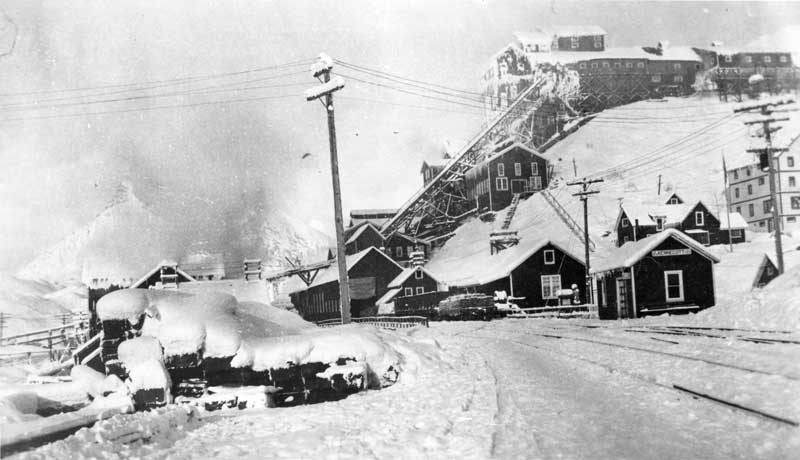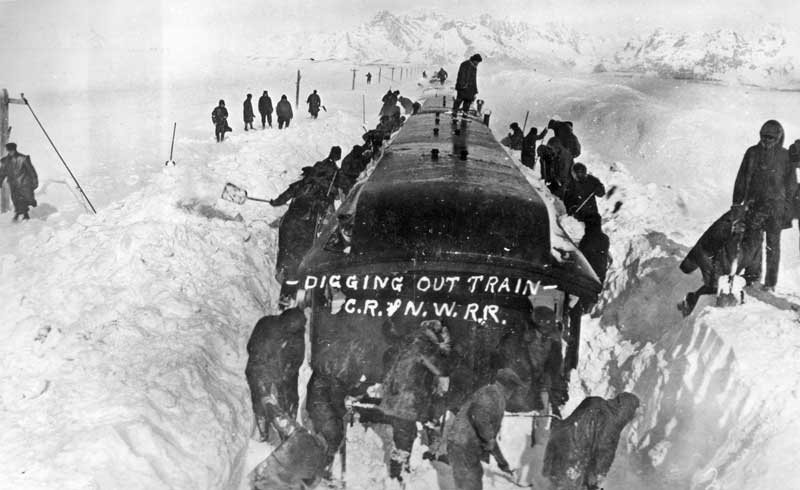GENERAL SUPERINTENDENT OF OPERATIONS, 1952
Learning Diplomacy
Haldeman: All of the departments were managed by Mr. Turton's old cronies
and buddies, and each man had a little empire. They just didn't
think anything about this young whippersnapper who was coming
around. I had to sit for an hour in the mill superintendent's
office, waiting for him to receive me and then sit back and say,
"What do you want to know?" I remembered Machiavelli's book and
the rule that the new prince always decimates the other princes
and puts his own people in. So I had to start, bit by bit, to
assume management. I was the general superintendent, and these
fellows had to report to me. It took an awful lot of diplomacy.
Swent: Had you had any formal training in management?
Haldeman: In those days management was not what you call management
today.. . Harvard Business School and management classes in
universities. No, I learned engineering, mining, geology, and
metallurgy, period. I never had a course in management, much
less a course in politics, an area I will get into.
Swent: Had management even been mentioned as something that you would
need to be aware of?
Haldeman: In the fifties, Harvard Business School suddenly became
important in all of the business world. Prior to that,
businesses were run by old-time managers. It was only in the
forties and the fifties there was a sudden awareness of
industrial engineering and the likes that became a tool of
management . Then came all of these management training schools .
This all started about the time I was stepping out of the mine
and into management with absolutely no background in it. Nobody
else did in the company. [laughter] Swent: You were so isolated up there, you probably weren't aware of the
domestic politics either.
Haldeman: No, absolutely not. I was isolated in the mine, with American
town sites, American management, and 1 wasn't aware of any
politics going on.
 View of Sewell from below
(click for larger image)
View of Sewell from below
(click for larger image) General Manager Franklin D. Turton
Haldeman: About this time Mr. Turton passed away. He died at Coya, the
town where the management office was. Mr. Michaelson had to go
to Santiago to take the head job. Turton never wanted to.
Stannard tried to get Turton to go to Santiago, and he built a
building there with an apartment in it. But Turton had a
beautiful house in Coya with a big garden and fruit trees. He
was out at the mine, and he said, "I'll go to Santiago over my
dead body," and that's exactly how he went. He died of a heart
attack while he was out in the garden, propping up his fruit
trees after a windstorm.
Turton was a character and a wonderful man. He built up
the company. We used to have nail factories and made our own
stationery and form books and everything, because you had to be
independent to do it. Sometimes it took eighteen days by boat
to get instructions down from the United States. You can't run
a company that way. Sometimes the telephone didn't work; .
sometimes the manager had so many problems that he didn't answer
the telephone. [laughs] There wasn't any fax or anything like
that. Those were different days. We even made our own coffins.
You had to be self-contained. 
Area map showing Sewell (click for larger image)
Index to Haldeman Interview



 Swent: To this day most mining companies don't send all of their
executives in the same plane.
Swent: To this day most mining companies don't send all of their
executives in the same plane. 














 In 1942, I got a call to report to Hamilton Field, that I
had been accepted in the air corps, and they finally had enough
airplanes. I took this letter over to my boss at the mine, he
gave it to the mine superintendent, who gave it to the general
manager, who sent it up to the New York office, who had at that
time declared to the government that they needed so many people
down there to get the copper as part of the war effort. So
myself, along with the other boys, were classified as 4-F and
frozen in our jobs. The fickle finger of fate.
In 1942, I got a call to report to Hamilton Field, that I
had been accepted in the air corps, and they finally had enough
airplanes. I took this letter over to my boss at the mine, he
gave it to the mine superintendent, who gave it to the general
manager, who sent it up to the New York office, who had at that
time declared to the government that they needed so many people
down there to get the copper as part of the war effort. So
myself, along with the other boys, were classified as 4-F and
frozen in our jobs. The fickle finger of fate. 


























